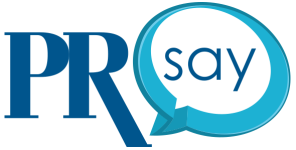Which of these leads would you rather read?
This one?
UnumProvident Corporation’s (NYSE: UNM) today announced the expansion of its online Comparative Reporting & Analysis (CR&A) information services, designed to help employers track employee absences.
Or this one?
Employers now have a better way to measure, monitor and manage employee absences.
That’s because UnumProvident Corporation (NYSE: UNM) recently announced its expanded online Comparative Reporting & Analysis information services.
Me too.
In the first, conventional, lead, I’m not going to make it to the second acronym. But I’ll pay attention to the second message because the writer focused on the reader, not on “us and our stuff.”
How can you Catch Your Readers by thinking like a reader?
- Put the audience first.
Read and heed this insight from Dick Weiss of the St. Louis Post-Dispatch:
“A few years ago, my newspaper did a study in which interviewers asked readers who or what was most important to them,” he says. “Their answer was in some ways surprising. Many did not say their families, children or God.
“Instead, their answer was: ‘Me.’”
It’s easy to think that your topic is the topic. But your reader is really the topic.
Rather than focusing on your stuff, focus on your readers. That will make your message more interesting, relevant and valuable.
Instead of:
XYZ Company announces its Workbench Sensor Designer tool, which enables engineers to quickly move from concept to simulation to prototype in a few keystrokes.
Write:
Engineers who typically take weeks to design sensor systems can now complete their designs in minutes, thanks to a new, online tool.
- Lead with the benefits.
Journalists’ biggest pet peeve? Releases that aren’t relevant to the audiences they serve, according to a survey by Greentarget.
Whether you’re a PR pro, marketing communicator or internal comms expert, your readers wants to know: “How is this relevant to me?”
To make your messages relevant, lead with the benefits and substantiate with the features.
Quick reminder:
- Features are “what it is.” In the case of a stool, that might be little rubber bumpers.
- Advantages are “what it does.” They make the stool skidproof.
- Benefits are “what it’ll do for you.” Never replace your expensive hardwoods because they’re all scuffed up,
Then lead with the benefits, sandwich the advantages and substantiate with the features:
Never scrub skid marks off your floor again, thanks to our skidproof little rubber bumpers.
𝗫 DON’T lead with the features:
Learn from Applesauce why brand loyalty is essential for your brand to succeed: Register for our webinar today.
✔️DO lead with the benefits:
Would you like to improve brand loyalty by 20%?
Find out how Applesauce did it — and how you can do it too — at our next webinar.
Write about the reader.
Stephany Romanow-Garcia, senior process editor at Hydrocarbon Processing, offers communicators some advice:
“There’s nothing wrong with a story about a new product,” she says. “But readers want to know, ‘How am I going to use it?’ I’m not interested in ‘new and improved.’”
So stop writing about your stuff. Write about the reader instead.
Ann Wylie (WylieComm.com) helps PR professionals Catch Your Readers through writing training. Her workshops take her from Hollywood to Helsinki, helping communicators in organizations like Coca-Cola, Toyota, Eli Lilly and Salesforce draw readers in and move them to act. Never miss a tip: FreeWritingTips.wyliecomm.com.
Copyright © 2025 Ann Wylie. All rights reserved.
Illustration credit: sergey nivens







